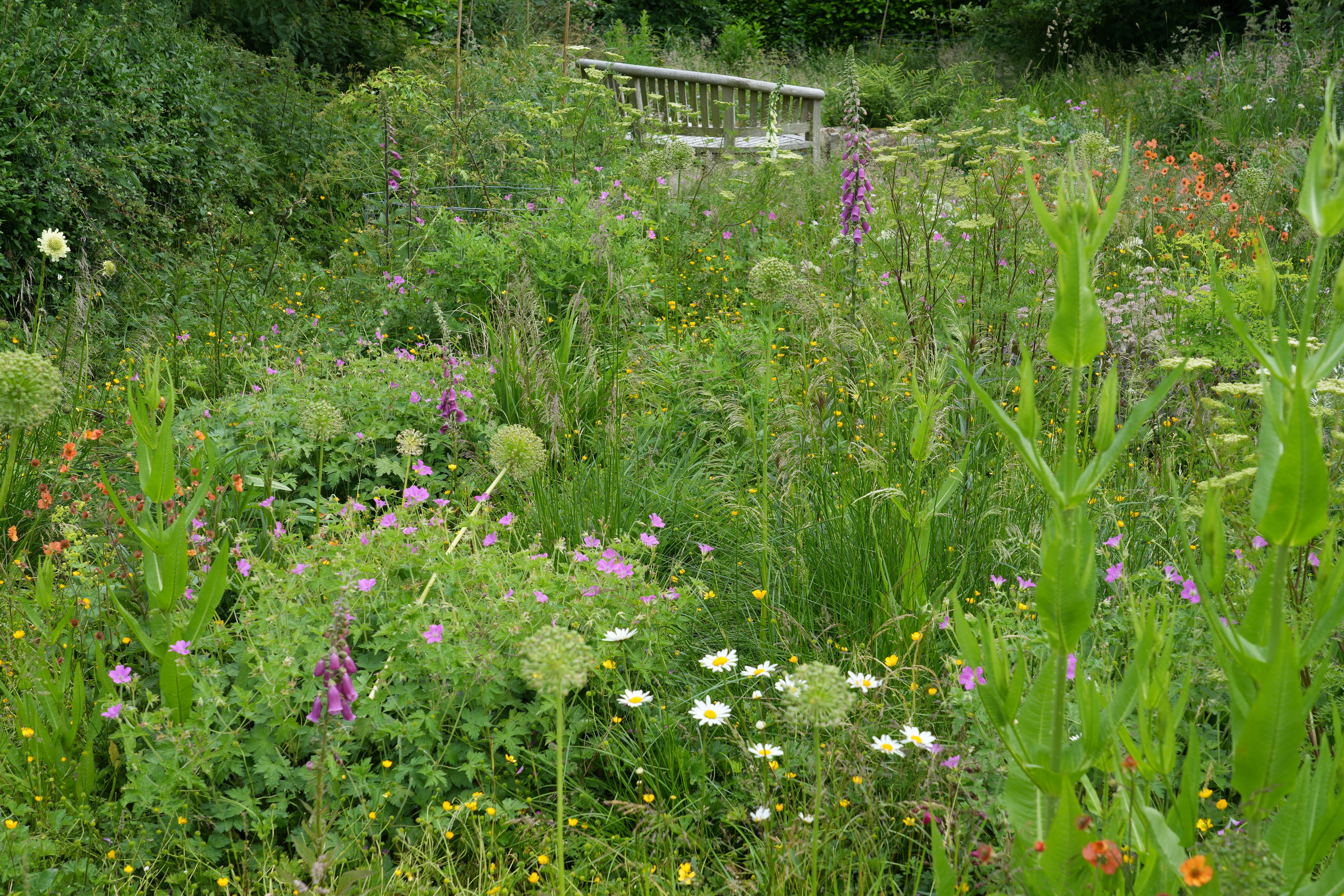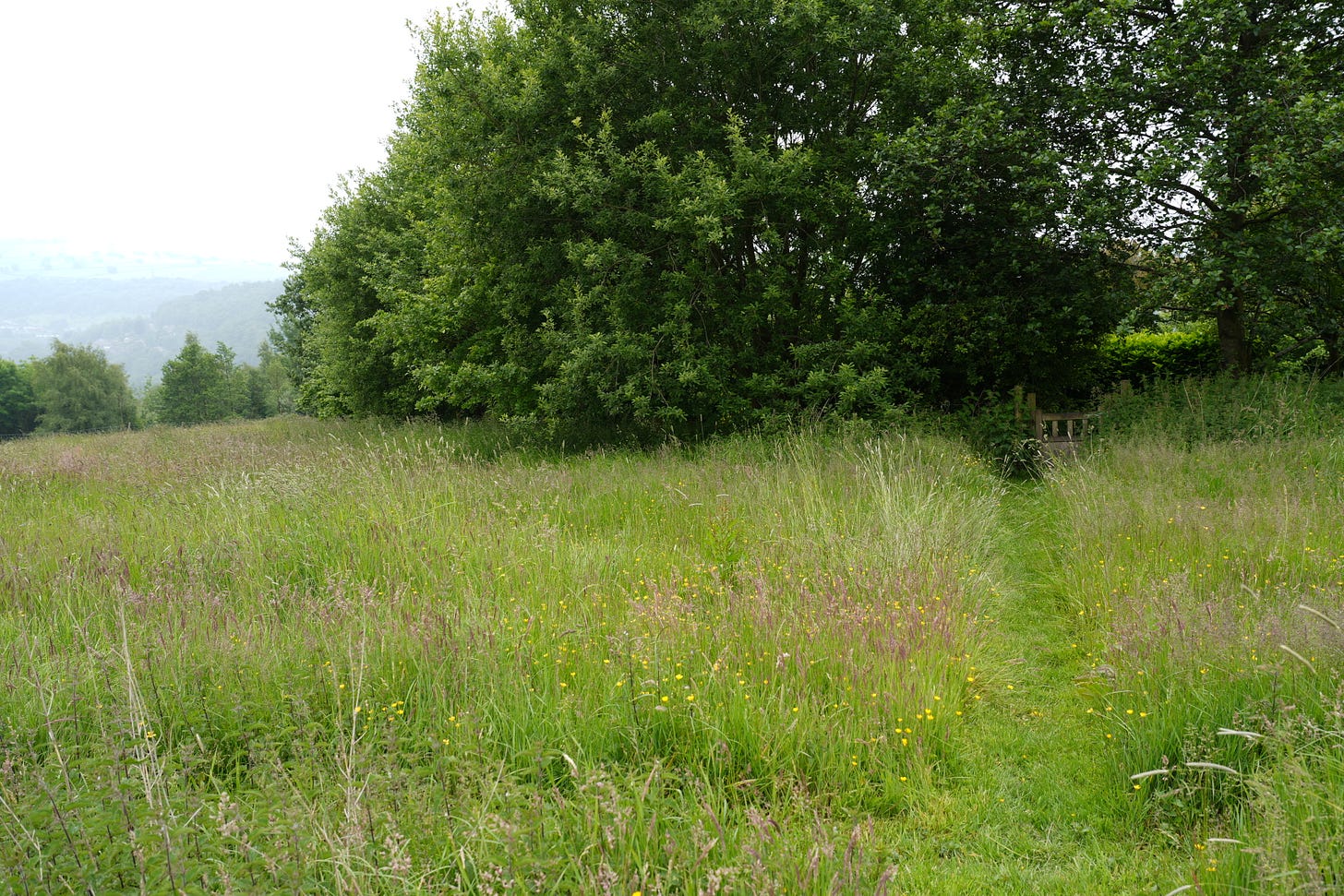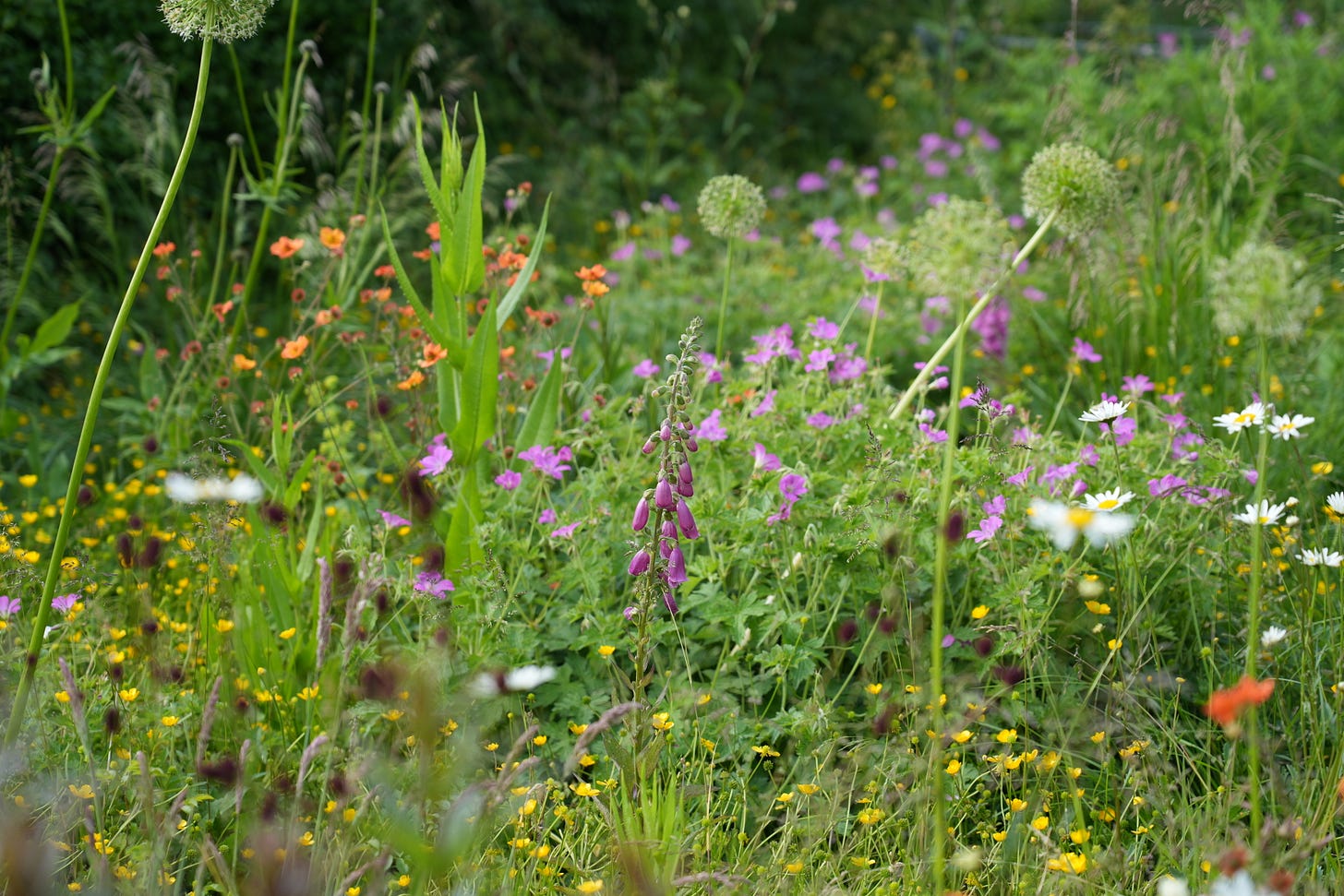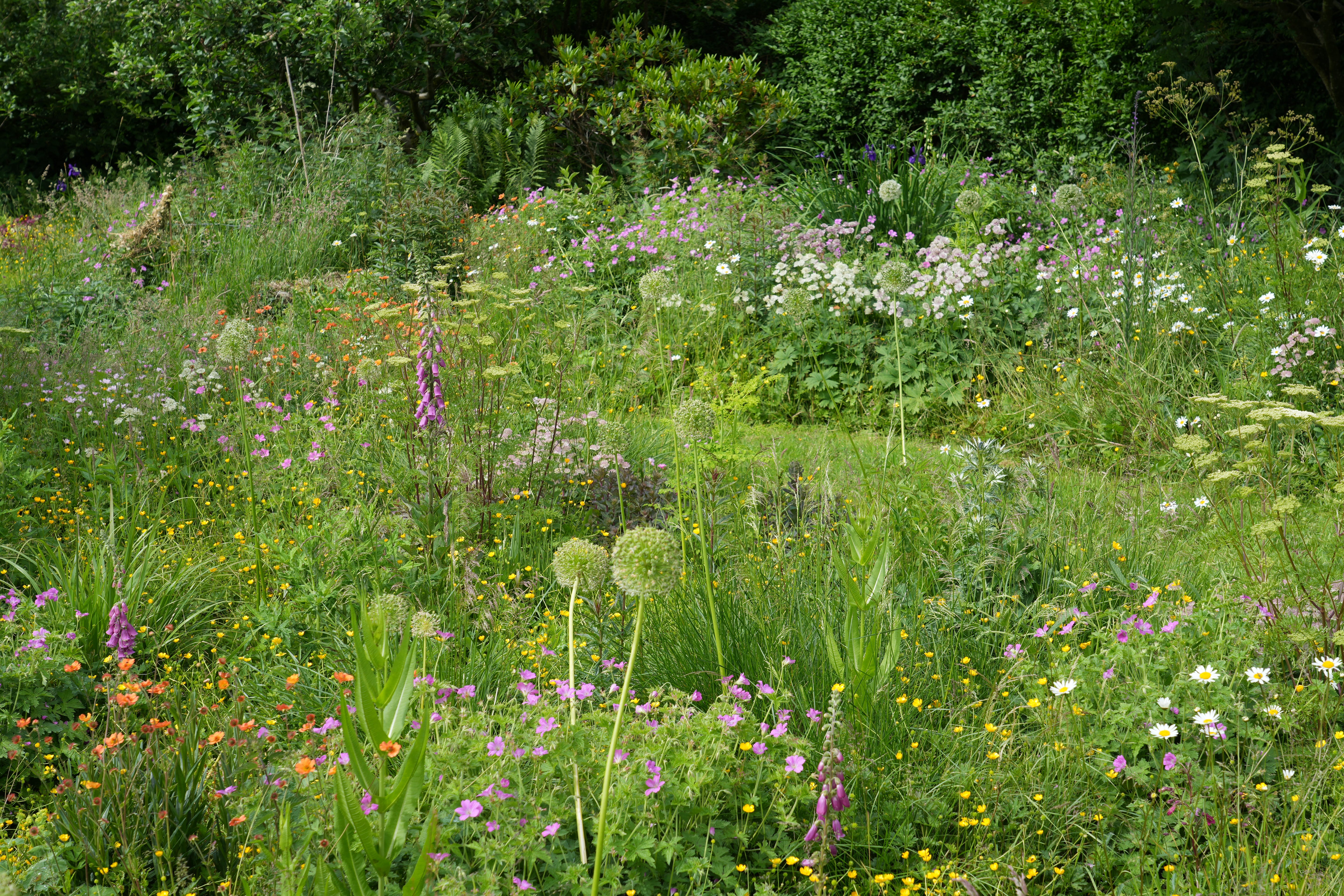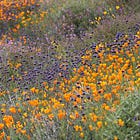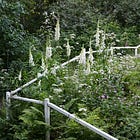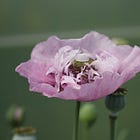What is plant community design and does it work?
Introduction to the concept of wilder planting design
Our garden is a loose plant community that changes every year. As the gardener I of course steer it in one direction by adding or dividing plants, but the plants are my gardening partners. Foxgloves, teasel, tufted hair grass, oxeye daisies and many other plants self sow where they want and I often leave them to surprise me. I didn’t plant any of them in the above photo.
I have always seen plants as the living entities they are rather than objects for humans to control. I want plants to be free to grow and express themselves as they would naturally. Which is why I have always grown with a plant community approach. Let your plants romp free!
What is a plant community?
The term ‘plant community’ originates from talking about wild plants, how they grow alongside one another. It is an ecological concept. In the wild, although plant communities can form very quickly, the stable ones are often hundreds if not thousands of years old. It is this promise, the best of the wild, both beautiful and self-sustaining, that is so appealing to me and other designers for gardens.
Example: meadows and woodlands are a good starting point for understanding the concept of plant community. Think about a wildflower meadow dense with hundreds of plants per square metre that come back every year, as shown above in our meadow next to the garden. Or woodlands with tall and small trees and shrubs, with a groundcover of shade loving plants beneath like ferns and bluebells, and the occasional patches of bare earth.
In plant communities, the plants compete and settle to reach an equilibrium of sorts. Stability is a defining feature of plant communities, where we see the same plants coming back year-on-year.
Paradoxically, although plant communities are about stability, they are also about dynamism and change. This is usually the influence of the weather, where a warm dry spring may favour one species, a wet cold spring another. In our meadow, yellow rattle flowers thrive in dry warm springs, whereas grasses and meadow buttercups takeover when it is wetter.
Key factors to consider when planning a plant community
Conditions: what are your soil, temperature, rain and surrounding conditions? Is it shady or sunny? Is the soil acidic, neutral or alkaline? Does your soil locally favour woodland or grassland? What wild communities near you can you learn from?
Environment: how is climate change going to impact your area? For much of southern UK, for instance, the growing season is expected to get drier, but for northern UK it will probably become much wetter in winter.
Plant size and form: when choosing plants, consider their size and form. Are they towering giants but airy, allowing light through to other plants? Are they short and dense, blocking light to other plants beneath them? How will they all interlock together?
Plant behaviour and role: how do the plants behave over time? Do they dwindle in dense competition? Will they spread and takeover? Will they spread gently to multiply and renew without taking over? Are they static requiring a gardener to divide and multiply them? Are they star plants or suppressing groundcover?
Full plant life cycles: How do the plants grow across a year? And how do they grow across many years? Are the plants short or long lived? How many need you to do some work to help them over time, such as dividing? Are there plants that don’t need this?
Planning plant communities is all about understanding your area and garden’s conditions really well using data, plus having direct experience of how plants grow - which is only really possible by growing and trialling them. It’s best to do this yourself in your area, but my plant guides and Wild Plant A-Z will certainly help in the first instance.
Applying plant communities to garden design
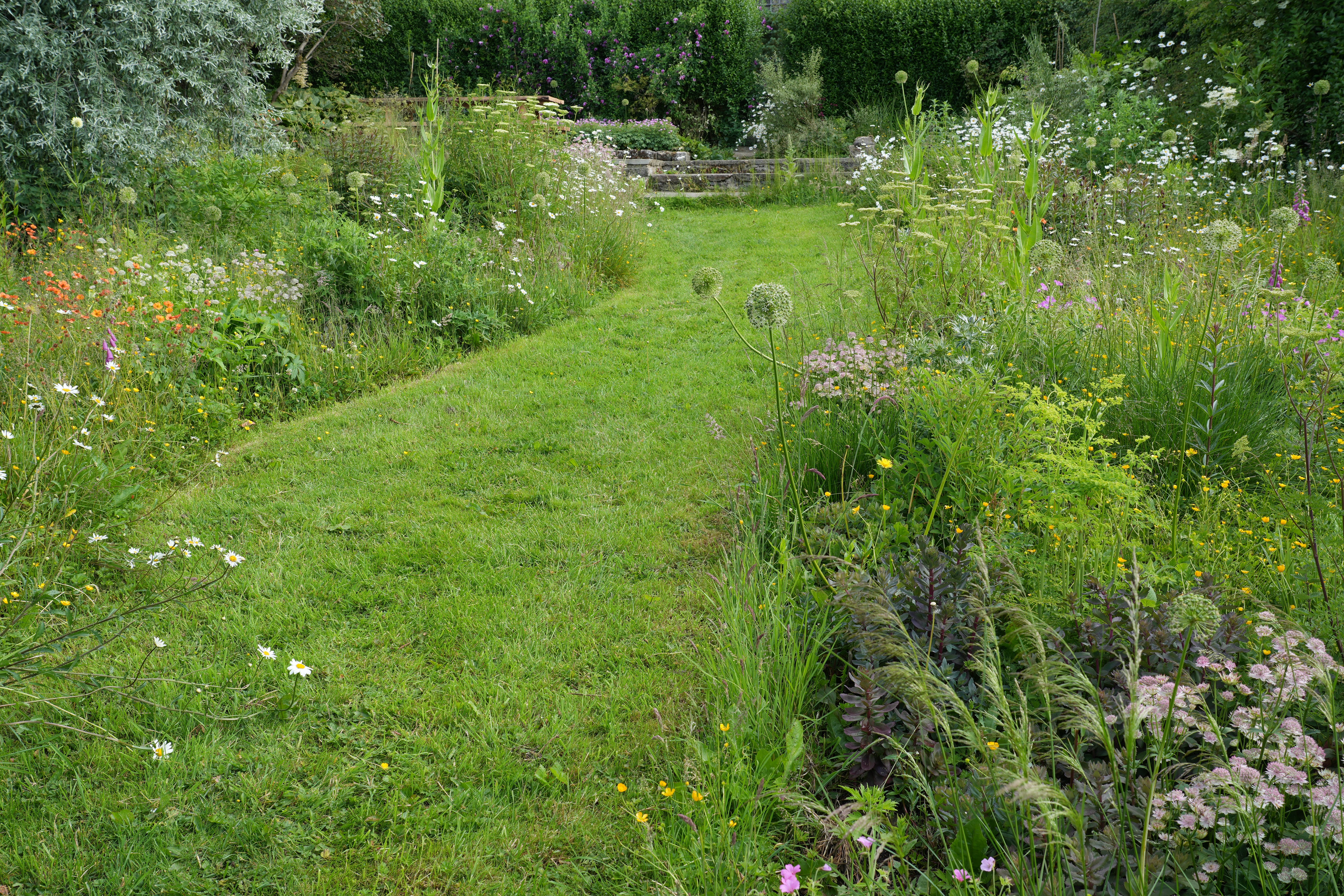
In plant community design we the gardener try to learn what evolution and natural selection has spent millions of years doing by choosing plants we think will grow together.
By studying wild plant communities and individual plants - as well as experimenting and practicing in our own gardens - we can make informed decisions.
First decide on the habitats you want to create, e.g. low growing meadow-like or taller shrubs, or likely, a patchwork of both. Then choose plants for certain areas that will fit those habitats.
A good example is with meadow inspired planting, I think carefully about the height of plants to make sure most of them don’t grow too tall, trying to achieve balance. I know that our pink geraniums, orange geums, white and yellow ox-eye daisies will all grow to the same height while allowing light in and around them for each to grow.
Example: in our garden, most of the plants that will spread are either low growing ground covers, such as pulmonaria and geraniums, or very narrow tall plants such as foxgloves. It’s important the large plants aren’t all spreaders otherwise they will simply takeover from all of the smaller plants by shading them out. I took inspiration from the adjoining meadow for most of the open parts of the garden, plus the local woods for the boundary hedging and trees. While I mix the shrubs, trees and open perennial areas to make it feel more natural, I deliberately make sure a large area of the garden is not shaded by tall trees or shrubs, allowing for a biodiverse perennial plant community.
Learning to listen to a plant community
Experimentation is key, you have to approach a plant community knowing a plant may not work and your plans almost certainly will need adjusting. Observe what the plants want to do and adjust accordingly. You may have to say goodbye to a plant you really wanted to grow, or change your colour scheme.
Example: in our garden I really wanted more peach and coral coloured plants, sadly most of those I tried are overbred cultivars that are far too weak for our dense plant community, such as penstemon and achillea - they are bred to be mollycoddled. I keep trying but I am also accepting our colour scheme is different to what I originally imagined.
Visual style of plant communities
Plant communities can be any style you want with the right plants and planning. They do lend themselves to the contemporary wild style, where plants mix and mingle. This wild style favours more natural looking flowers, like species plants that haven’t been overbred into blousy double flowers. These are often plants with many small flowers on open wiry stems that let the colours blend. But you don’t have to stick to this, you can have more structure and formality too, if you prefer. Such as by including topiary or focussing on more upright, structured plants.
Example: in our garden and my designs I tend to blend both wild chaos and structure, this gives a sense of order to what would otherwise be a tangled mess. I create minimalist layouts for gardens, which gives a good frame, such as our grass path. And then I rely on a small number of star plants repeated at random giving plant structure. These tend to fall into two groups. (1) Tall verticals, such as alliums in late spring, followed by foxgloves, Veronicastrum, teasel, ornamental grasses and other vertical uprights. (2) Colour blasts, usually from very reliable long-flowered plants, such as our pink geraniums.
Are there benefits to wildlife and sustainability?
Yes, these two things go hand-in-hand with plant communities because they are generally:
Dense: in temperate climates plant communities are dense to prevent too many new wildflowers from entering and disrupting the equilibrium. Even in drier southern European gardens, the plant diversity quantity is often denser per square meter even if there is bare soil. Plant cover is important for food and also shelter for wildlife.
Stable over many years, if not decades: stability of the plant community is a key criteria, that it remains stable over many years by itself or with minimal human intervention. Even if that means the success of different plant communities within it fluctuate based on annual changes in weather. This means less transport of plants and compost, less or no plastic and less soil and wildlife disturbance. Wildlife needs stability, the same plants coming back every year for species to feed and lay eggs on. Too much tinkering and replacing of plants could remove a valuable food source for a specific species.
Resilient: plant communities are planned with the location’s conditions in mind, plants tend to be selected so that once happy they are tolerant of a wide range of weather patterns. Some are less resilient than others, but because of our choices, to find the most suitable plants for the place, they will be more resilient to summer drought and winter wet.
Biodiverse: generally have a high range of different plant and wildlife species. Especially across many gardens in the same area with different selections of plants.
Seasonal: with plants flowering, growing leaves or fruiting across many or all seasons. For wildlife, our benefit and to maintain year round plant competition for stability.
Less watering: because I choose plants that will thrive in the conditions naturally, once established I never water the garden. Some plants do suffer in the hottest heat waves, but so far, they have always bounced back.
No plant community will ever be perfect and as the climate changes, some species may well struggle more than others and need replacing or accepting of their loss. However, in general, plant communities using plants that look after themselves because they are well balanced and tough, will have a good chance in the future.
Further reading
To learn even more about plant communities, please see my Garden Design Guide and various other lessons below. I also have my book A Greener Life, which is an introduction to all aspects of sustainable gardening from plant communities to growing food.
As always, if you have any questions please do ask me in the comments below.


